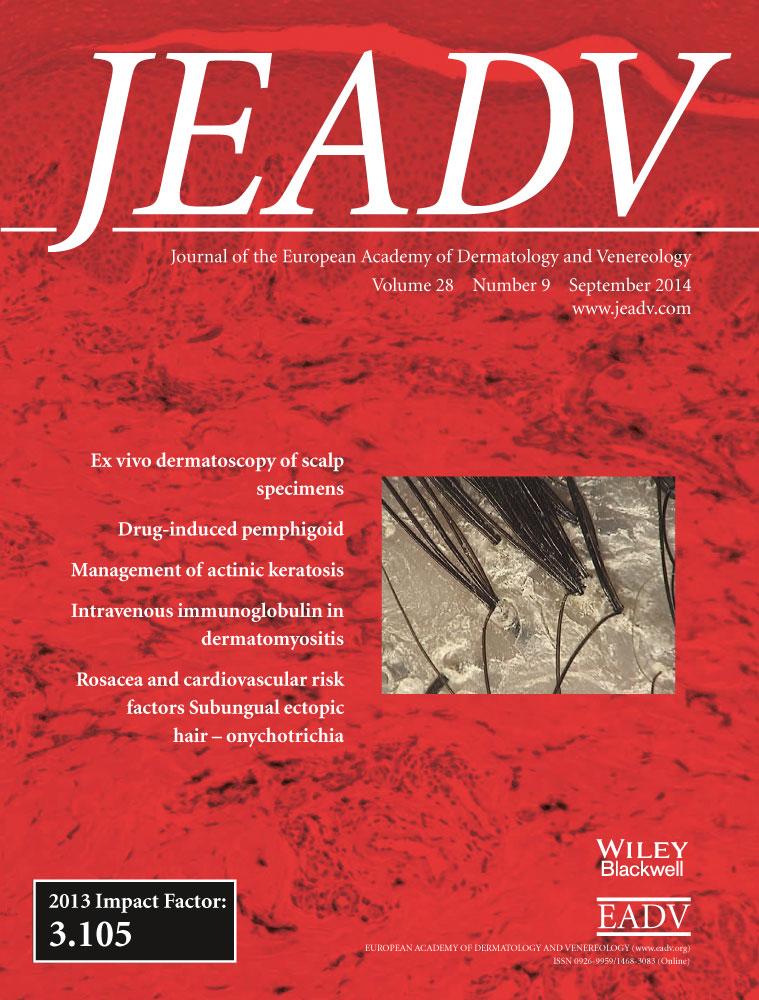Five patients with melanosis of the nipple and areola clinically mimicking melanoma
Conflicts of interest
None declared.Funding sources
None declared.Abstract
Background
Pigmented lesions on the nipple and areola concern patients and physicians as melanoma and pigmented mammary Paget's disease must be considered in the differential diagnoses. There have been only six case reports of melanosis of the nipple and areola in the medical literature yet five cases presented to our department in a 26-month period.
Method
Five women aged between 26 and 34 years presented with pigmentation of the areola and/or nipple. Two patients were pregnant and one also had vitiligo. All lesions were solitary, eccentrically located with a sharp but irregular contour, and homogeneous pigmentation. Dermoscopy was performed and reassuring features included light to dark brown cobblestone pigmentation with ring-like structures and reticulation. Blue-white veil and irregular centred black dots were not seen. Histology confirmed melanosis of the nipple and areola.
Conclusion
Melanosis of the nipple and areola is probably significantly underreported in the medical literature and, based on our experience, is likely to be the most common cause of pigmentation at this site. Considering this, benign condition on clinical and dermoscopic features should lead to biopsy rather than excision to confirm the diagnosis. Further reports of the dermoscopic features will help to define this condition further.




